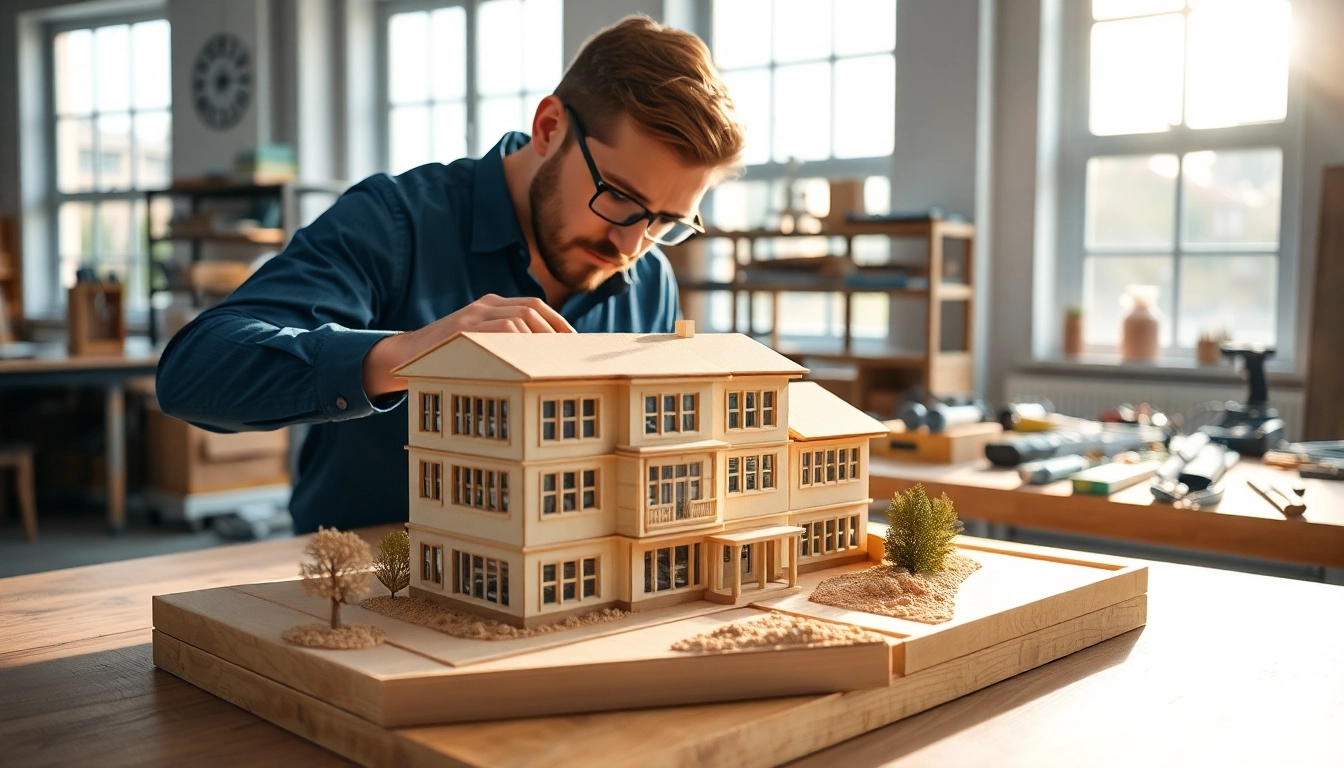Introduction to the Competition Model in Design
The concept of a competition model is pivotal in the realm of architectural design and urban planning. Harnessing this multifaceted approach provides a framework for architects and designers when creating innovative, compelling structures and environments. This model serves as a valuable tool in competitions, allowing professionals to showcase their creativity and practical solutions through visual communication, material choice, and conceptual clarity.
What is a Competition Model?
A competition model refers to the representation or prototype created by architects or design teams to visualize and present their concepts during design competitions. These models can be physical or digital and serve several critical purposes:
- Visualization: They help convey the overall aesthetic and functional aspects of the design to judges and stakeholders.
- Concept Development: Competition models allow designers to explore ideas quickly and iteratively, promoting creativity and innovation.
- Evaluation: They provide a platform for evaluating various aspects of the design, such as scale, proportion, and spatial relationships.
Importance of Competition Models in Architecture
Competition models play a crucial role in the field of architecture. They are integral not only for the designers but also for stakeholders, clients, and the broader community. Here are some reasons why they are important:
- Showcasing Vision: A well-crafted competition model showcases the architect’s vision and thought process, delivering a tangible representation of abstract ideas.
- Engagement: Physical models engage viewers and allow them to experience the design firsthand, fostering a deeper connection with the concept.
- Communication: Models serve as effective communication tools, bridging the gap between technical specifications and laypersons’ understanding of the design.
Historical Development of the Competition Model
The evolution of competition models traces back to ancient civilizations where architects and builders relied on basic representations of their designs. However, the modern history of competition models began in the mid-20th century, reflecting broader advances in architectural theory and practice:
- Early 20th Century: The establishment of formal architectural competitions saw designers showcasing their works through rudimentary models, often using materials like wood and paper.
- Post-WWII Era: With technological advancements, architects began to utilize innovative materials and methods, creating more sophisticated models that incorporated scale and detail.
- Late 20th Century: The rise of digital technology brought about a significant transformation. Digital modeling software allowed for high precision and the ability to easily manipulate designs.
- Present Day: Contemporary competitions increasingly emphasize not just aesthetics but also sustainability and integration with the built environment, influencing the design of competition models.
Key Elements of Effective Competition Models
Creating an effective competition model involves several core elements that work together to make the model both visually striking and functionally informative. Each aspect plays a significant role in ensuring the model resonates with judges and meets the competition’s criteria.
Materials and Techniques
The choice of materials and the techniques used in constructing competition models can significantly impact the final presentation:
- Material Selection: Different materials such as wood, acrylic, foam, and cardboard offer unique aesthetic qualities and tactile experiences. The material should reflect the intended use and thematic elements of the design.
- Construction Techniques: Techniques such as laser cutting, 3D printing, and handcrafting each provide different strengths and potentials. Each method has its respective benefits, affecting the overall look and feel of the completed model.
- Texture and Detail: Incorporating varied textures and details into models can yield a more realistic and dynamic presentation that captures the viewer’s imagination.
Scale and Proportions
Scale and proportions are foundational principles in architectural design, crucial for creating harmonious models:
- Choosing the Right Scale: Scale selection affects how the model communicates ideas. Common scales include 1:50, 1:100, or even 1:200, depending on the project’s scope and detail level.
- Maintaining Proportions: Ensuring proportions are consistent throughout the model is vital for reflecting the intended human experience and functionality of the design.
- Contextual Relation: Models should also account for their spatial relationships within their surroundings, providing a context that enhances their overall impact.
Presentation and Visual Communication
Presentation is an essential aspect of competition models. How a model is presented can greatly influence judges’ perceptions:
- Lighting: Good lighting can accentuate the features of a model, highlighting important design aspects and creating mood.
- Backdrop and Setting: An appropriate backdrop can provide context, helping viewers understand the design’s relationship to its environment.
- Storytelling: The presentation should tell a story about the design, addressing not only the ‘what’ but also the ‘why’ and ‘how’ behind the concept.
Case Studies: Successful Competition Models
Examining successful competition models provides valuable insights into best practices and innovative techniques. Here are some illustrative case studies that shed light on effective models in architectural competitions:
Examining Award-Winning Entries
Several architectural competitions have showcased remarkable entries that have left significant impacts on the field:
- The Guggenheim Museum Competition: Frank Lloyd Wright’s iconic design exemplifies how a competition model can transcend traditional architecture, creating a fluid space that invites exploration. His meticulous attention to scale and form won him the competition and solidified his place in architectural history.
- The Bird’s Nest Stadium: For the 2008 Beijing Olympics, Herzog & de Meuron’s design employed a striking competition model that captured the spirit of the occasion while addressing sustainability. The model’s innovative use of materials and striking design won critical acclaim.
Learning from Failures
Not all competition models succeed, and analyzing failures provides critical lessons:
- High-Speed Rail Network Failures: Several poorly-conceived submissions for railway stations presented designs that overlooked real-world functionality. By focusing solely on aesthetics, they failed to consider the user experience, illustrating the importance of practicality in model design.
- Community Feedback: Some models that ignored local community input faced backlash, underscoring the need for engaging stakeholders early in the design process to ensure relevance and acceptance.
Innovative Uses of Technology
Technology has revolutionized how competition models are designed and presented:
- 3D Printing: This technology allows architects to create detailed models quickly, facilitating rapid prototyping and flexibility in design changes.
- Virtual Reality (VR): VR provides immersive experiences, allowing judges to explore models in a simulated environment that enhances understanding and appreciation of spatial relationships.
- Modeling Software: Advanced tools such as Rhino and SketchUp allow for precise modeling, offering the ability to visualize complex geometries and optimize designs effectively.
Step-by-Step Guide to Creating a Competition Model
Creating an outstanding competition model involves a structured approach, ensuring high-quality outcomes. Below is a step-by-step guide designed to help architects through this process.
Initial Concept Development
The foundation of a successful competition model lies in the initial concept:
- Research and Inspiration: Gather inspiration from existing projects, nature, and art. Understand competition guidelines and requirements thoroughly.
- Sketching Ideas: Begin the design process with sketches to explore various layouts, forms, and concepts.
- Feedback Loop: Engage peers and mentors to critique initial ideas, offering fresh perspectives and constructive criticism.
Prototyping Techniques
The prototyping phase is where concepts begin to take shape:
- Creating a Low-Fidelity Model: Start with simple materials to develop an early model. Use this to visualize proportions, layout, and spatial configuration.
- Iterative Prototyping: Modify models based on feedback. Create multiple iterations to explore diverse design paths effectively.
- High-Fidelity Model: Once a preferred design emerges, build a detailed high-fidelity model using your selected materials and techniques.
Final Presentation Strategies
The final presentation is crucial for conveying the design intent and delighting judges:
- Polishing the Model: Ensure that the model is well-finished, with clean lines and no visible defects, as presentation matters.
- Effective Storytelling: Prepare a narrative to accompany the model with compelling context that guides judges through your design thought process.
- Practice Delivery: Rehearse your presentation multiple times to ensure confidence and clarity when addressing judges.
Future Trends in Competition Models
The future of competition models is being shaped by emerging trends that align with societal values and technological advancements:
Integration of Sustainable Practices
As sustainability becomes a key focus in architectural design, competition models will increasingly feature environmentally friendly practices:
- Material Choice: Recycled and sustainable materials will play a crucial role, with designers highlighting eco-friendly options in their models.
- Energy Efficiency: Models will incorporate features that showcase energy-efficient designs, appealing to both competition judges and clients.
- Community Impact: Future models will emphasize the positive effects on local communities and ecosystems, showcasing socially responsible designs.
Embracing Digital Design Tools
With the rapid evolution of digital tools, their incorporation into model-making is poised to increase:
- Generative Design: Tools that utilize algorithms to enhance design capabilities, providing a multitude of design solutions based on specified constraints and requirements.
- Augmented Reality (AR): Enhancing physical models with AR can provide a more extensive understanding of the design through informative overlays and interactive experiences.
Adaptations for Virtual Competitions
The shift toward virtual competitions necessitates new adaptations in model-making:
- Digital Presentation: Models must be easily adaptable for digital presentations, ensuring that all aspects can be communicated effectively online.
- Remote Collaboration: Increased use of collaborative tools allows design teams to work together remotely, fostering inclusivity and a broader range of ideas and influences.
- Data Visualization: The use of advanced data visualization techniques will help convey complex ideas succinctly, enhancing the overall understanding of the project’s merits.



